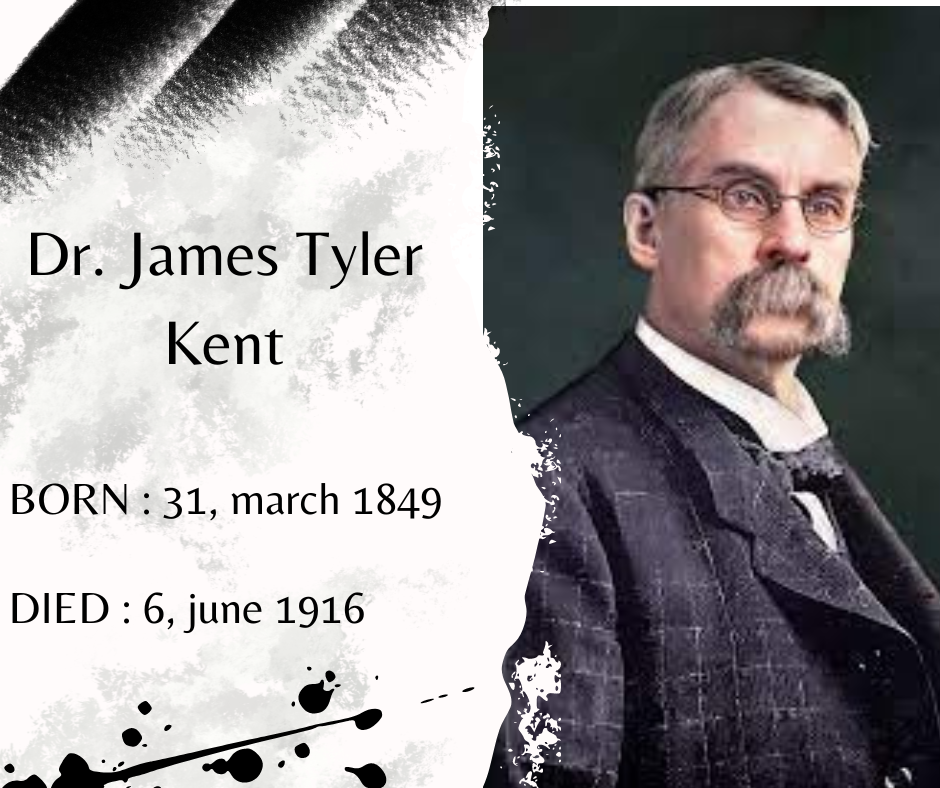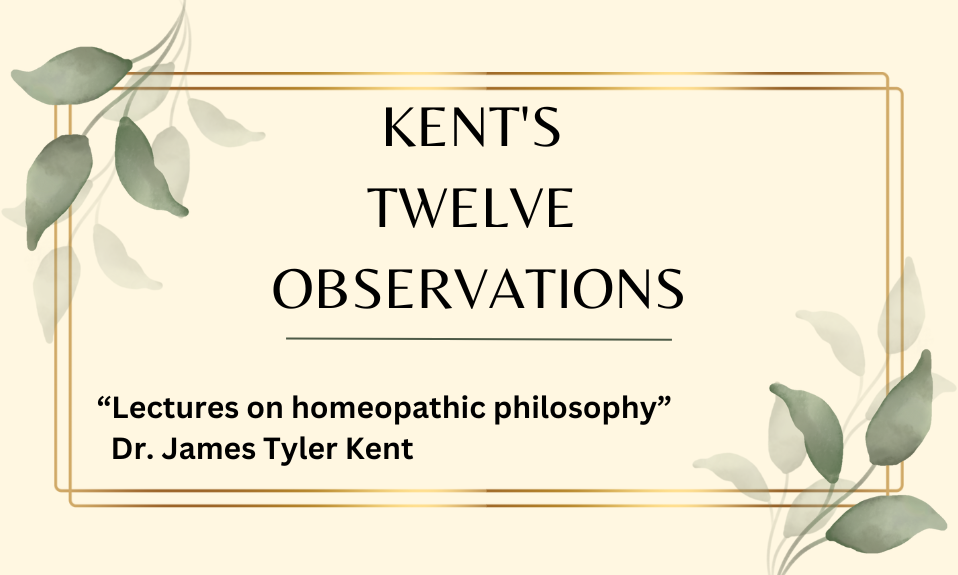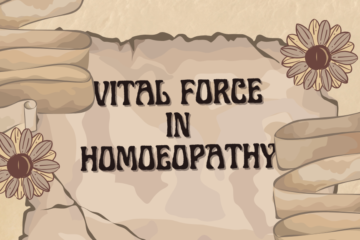Contents
hide
- “Kent’s 12 observations” is originally compiled from the “lecture no 35 : Prognosis after observing the action of the remedy” from Dr. James Tyler Kent’s “Lectures on homeopathic philosophy”.
WHAT IS IMPORTANCE OF OBSERVATION
- The mission of physician (aphorism – 1) does not stop with prescription of the medicine , however the real work (mission) start from here !!!
- After prescribing the medicine physician commences to make observations as the future of the patient is depends upon the conclusions that he arrives from his observation.
- Physician’s action depends upon the observation and upon his action depends the good of patient (the sick).
- The observation is the key to open the lock of second presciption and lead the patient to restoration of health, to cure.
- These 12 observations were grown out by Dr. James Tyler Kent’s much watchfulness, long waiting and watching.
“Lectures on homeopathic philosophy” by Dr. James Tyler Kent
WHAT IS THERE TO OBSERVE AFTER PRESCRIPTION ?
- After the acurate prescription and administering medicine , it commenses immediately to affect changes in the patient and those changes are shown by sign and symptoms.
- What are the changes and what do they mean , what do they mount.
- The Diss – appearing symptomes , the increase of symotoms.
- The amelioration of symptom , the order of symotoms.
- Whether the course of disease is from inwards to outwards or not.
- If the aggravation appears then whether it is aggravation of disease or of homoeopathic aggravation.
HOW THE OBSERVATION HELPS THE PHYSICIAN ?
- Whether the patient is improving or declining.
- To judge by symptoms to know what is taking place.
- Very often the patient will say, “I am growing weaker,” and yet you may know that what he says is not true , so certainly can you rely upon the symptoms and their story, which is more faithful than the patient’s opinion.
- Many times the patient will say, “Doctor, I am so much worse ” and yet you examine into his symptoms and you find that he is really doing very well.
- You can tell when the patient is really weaker, and if the symptoms are taking an inward rather than an outward course. You will know that there is no encouragement for the patient even though he is feeling good , because disease went inside rather than outside.
- The symptoms do corroborate with what the patients say in many instances, but the symptoms are the physician’s most satisfactory evidence.
KENT’S 12 OBSERVATIONS
- After administering a similimum, Kent explains that any one of the following 12 possibilities or rather observations can be noticed in the patient :
“Lectures on homeopathic philosophy” by Dr. James Tyler Kent

FIRST OBSERVATION
“Lectures on homeopathic philosophy” by Dr. James Tyler Kent
Conclusions :
- If after the first prescription , this observation is found, then interpret that the case was an incurable one.
- Physician have handled a case with unfavorable prognosis.
- It was a mistake that prescribed anti – psoric remedy was too deep acting one for the case.
- Which led to establishment of pathological destruction in this case.
- In this state the reaction of the vital force is impossible or useless.
What to do ?
- Antidote the previously prescribed remedy immediately.
- The case is already reach to uncurable state , so the prognosis will be bad if not antidoted.
What to learn ?
- In incurable and doubtful cases do not use higher potencies, use the lower or medium potencies like 30th or 200th.
- In such cases, better to give the remedies in 30th potencies, and never repeat the doses frequently.
- In the cases with organic damage or pathological changes deep acting – curative remedies should not be given. Always start the treatment with low potency.
SECOND OBSERVATION
“Lectures on homeopathic philosophy” by Dr. James Tyler Kent
Conclusions :
- This observation indicates that the disease is still in the curable state.
- No any organic or pathological changes occured yet.
- The tissue change is in the beginning stage.
- The vital force is still in reactive stage thats why the aggravation has lasted for a long time which is followed by final slow improvement.
- The curative remedy has been given in the right time, if the remedy was given somewhat delayed then the case would have gone deeper and cure would have been hard or impossible.
What to do ?
- The case is curable and prognosis is favourable so do not repeat any remedy.
- Just wait and watch for the curative reaction of vital force.
What to learn ?
- It is always better to start medicine in low potencies.
- In doubtful cases antidote has to be kept ready in case of any type of unwanted aggravations or if symptoms take wrong course.
THIRD OBSERVATION
“Lectures on homeopathic philosophy” by Dr. James Tyler Kent
Conclusions :
- This observation is the classical homeopathic aggravation.
- It is the most favorable observation that any homeopath would like to observe.
- The selected remedy is the correct one (most similimum – homoeopathic specific).
- The improvement of the patient will be long lasting as well compelete removal of disease will occur.
- There is no organic changes occured in the patient and prognosis of the case will be very good.
What to do ?
- The case is in a good condition, just wait and watch.
- Do not give any repetition of the remedy.
What to learn ?
- Quick, short and strong aggravation can bring a long – lasting improvement in the patient.
- The third observation of Kent is seen :
- Few hours after administering the remedy in acute cases.
- Few days of administering the remedy in chronic cases.
FOURTH OBSERVATION
“Lectures on homeopathic philosophy” by Dr. James Tyler Kent
Conclusions :
- It is the classical homeopathic cure (Highest ideal of cure).
- The selected remedy, its potency and the dose are exactly suitable for the case.
- There is no pathological change in the patient.
- The disease is in its functional level and belongs to the nerves and its functions.
- If fourth observation is noticed in acute diseases, it is very good and cures the case rapidly and in a gentle manner.
- But if the fourth observation is noticed in chronic cases, it leaves the physician in doubt.
- In such conditions it is difficult to judge that whether the remedy acted curatively or plaintively.
What to do ?
- In both acute and chronic cases if the fourth observation is noticed, any repetition of the remedy has to be stopped.
- In acute cases it proves to be curative.
- In chronic diseases it is hard to judge ~ so that any repetition of the dose should be stopped because it may interrupt the action of the curative remedy that has been given and hinder the cure.
- The case should be kept under observation.
What to learn ?
- It is highest order of cure (Highest ideal of cure), especially in acute conditions.
- Yet the physician wishes to notice a slight homeopathic aggravation in th beginning of cure especialy in chronic diseases.
FIFTH OBSERVATION
“Lectures on homeopathic philosophy” by Dr. James Tyler Kent
Conclusions :
- This observation suggest that the condition is unfavorable.
- The remedy prescribed has either acted superficially or in the palliative manner (partial similar medicine)
- This also happens in some cases where the patient was in an incurable case and he was administered partially similar remedy based on the most annoying symptoms alone.
What to do ?
- Reconsider the symptomatology and find out
- Whether the selected remedy was chosen based on the totality of symptoms or not?
- Whether the remedy is covering the characteristic totality of the case or not?
- Whether the patient is in the curable state or we are handling a case which is incurable?
- Whether the selected remedy is the constitutional, deep acting one or the acute superficially acting remedy?
What to learn ?
- In a long seated and severe case, if amelioration comes first then the physician should suspect the case and reconsider it again.
- He tries to find out the fault in the remedial level, patient level and the repetition of the remedy etc.
SIXTH OBSERVATION
“Lectures on homeopathic philosophy” by Dr. James Tyler Kent
Conclusions :
- Higher the potencies longer the action time.
- But curative remedy despite of acting for short time, relieves the patient for a long time.
- In some cases, initially the patient feels amelioration for too short duration which will aggravate immediately after.
- Quick rebound of complain is obeserved.
- If there is quick rebound then the amelioration should last , but if it does not last then it means there is some interferes in action of remedy – it may be unconsious or intentionaly on the part of patient ( by patient, assesory circumtances , aphorism – 5 , 7 , 94 )
- If such obstacles are not present in acute cases then the sixth observation indicates high grade inflammatory conditions due to high action of remedy ( like belladona ) , which may interfere with the prognosis and the improvement of the case.
What to do ?
- The obstacles that are interfering the action of remedy sould be aliminated.
- Habits like drinking alcohol, smoking , occupational interfering , mode of living and habits etc, may interfere the curative action of the remedy.
- In chronic cases, the sixth observation indicates that there is high grade inflammatory action is going on and there are structural changes and organs are being destroyed or destroyed or in very precarious condition. Hence the prognosis is bad.
What to learn ?
- One must suspect the amelioration, that always comes very early because according to Dr. James Tyler Kent , the best amelioration will always come gradually, at the end of an hour or two hours and that is likely to remain.
SEVENTH OBSERVATION
“Lectures on homeopathic philosophy” by Dr. James Tyler Kent
Conclusions :
- In the latent conditions or in the latent existing organic conditions we observe this seventh observation.
- In such case prevent the improvement above certain state.
- Examples : a patient with one kidney can improve to a certain degree , patient with fibrinous structural changes in certain places , tubercles that have been encysted and lungs capable of doing only limited work will have limited symptoms and these symptoms will be ameliorated from time to time with remedies, but the patient is only curable to certain extent. ~ he can not go beyond and rise above such state.
What to do ?
- The type of case is only suitable to homeopathic palliation and the prognosis with these palliative remedies will be good.
- But the patient is not cured and will never be cured.
What to learn?
- In some latent organic conditions, cure is not possible and palliation is the only way.
- One cannot expect highest ideal of cure in every case he handle.
EIGHTH OBSERVATION
“Lectures on homeopathic philosophy” by Dr. James Tyler Kent
Conclusions :
- If such condition is observed, we have to think that the patient is said to have idiosyncratic person.
- These patients are inclined to be hysterical, over wrought, oversensitive to many things.
- After receiving high potency, they go on proving this medicine.
- When they are under the influence of this medicine they cannot come under the influence of any other medicine. Such patients are great provers ~ they will prove higher potencies of medicines. After they get out of one proving, they are quite ready to repeat it or go into another.
What to do ?
- These over – sensitive patients are sometimes incurable.
- These type of patient have bad prognosis.
- When you find a patient that proves everything that you give in higher potencies, then go back to 30th potency and 200 th potency. We could often cure their acute conditions by giving them 30th potency and 200th potencies and their chronic conditions by giving them 30th potency, 200th potency and 500th potency.
What to learn ?
- The so-called oversensitive patients are often incurable.
- Patient are known to have idiosyncrasy to everything.
- Many of them are born with this sensitivity and they will die with it.
- Such over – sensitive patient are not capable of rising above this over – irritability and over wrought state.
NINTH OBSERVATION
“Lectures on homeopathic philosophy” by Dr. James Tyler Kent
Conclusions :
- Healthy provers are always benefited by the proving, if they are properly conducted.
- The constitutional symptoms of the indevidual prover have to be carefully noted down and subtracted from the symptoms that we find by drug proving.
- [Symptoms of drug proving = symptoms of drug + constitutional symptoms of prover]
- [Hense, symptoms of drug = symptoms of proving – constitutional symptoms of prover]
- These symptoms will not very commonly appear during the proving , if they do, note the change in them.
TENTH OBSERVATION
“Lectures on homeopathic philosophy” by Dr. James Tyler Kent
Conclusions :
- If numbers of new symptoms appear after administration of the remedy, the prescription would generally be unfavourable.
- The greater the new symptomes coming out the more doubt thrown upon prescription that the prescription is not the right one.
- The condition will genreally prove to be unfavorable.
What to do ?
- Before coming to any conclusion, the new symptoms have to be verified by the physician with the help of patient him – self and his family members.
- Because it possible that the new symptoms turn out to be old symptoms which the patient may have forgotten to mention during case taking, considering them to be unimportant. Or else the patient may have not noticed, or forgotten these new symptoms, as they have occurred in his tender life, only his parents may recall them.
- If these symptomes prove to be old one that its good because remedy if correct and cure is occuring from within to outward.
- But If these symptoms were not observed by anybody before then the appearance of new symptoms is an unfavorable condition and the remedy has to be antidoted, or changed.
What to learn ?
- This condition is not the favorable one.
- The probability is that after these new symptoms have passed away, patient may settle with the original state. and no improvement will take place.
ELEVENTH OBSERVATION
“Lectures on homeopathic philosophy” by Dr. James Tyler Kent
Conclusions :
- The condition is much favorable. The disease is curable one.
- If the symptoms are following the reverse order of appearance of symptoms and following Hering’s law of cure, cure is inevitable.
- Patient is on the path of recovery.
What to do ?
- Wait till remedy complete its action , if reappeared old symptoms goes of then there no need of repetition of medicine.
- but if old symptoms comes back and stay the repetition of the dose is necessary.
- It is good to say to patient that this encouraging and favourable condition.
What to learn ?
- Re – appearance of old symptoms after prescribing a remedy is a good indication in any case only If the symptoms are appearing according to Hering’s law of cure, it is going to bring a highest ideal of cure.
- The cure must take place from above downwards, within outwards, from more important organ to less important organ and in the reverse order of appearance of the symptoms.
TWELFTH OBSERVATION
“Lectures on homeopathic philosophy” by Dr. James Tyler Kent
Conclusions :
- this observation is the bad sign because the symptoms are not following Hering’s law of cure rather the disease is going inwards from outwards.
- The administered medicine is partial similimum.
- The medicine was not selected properly and it is not homoeopathic specific but it is just specific.
- Prognosis of the case is not favourable , because the remedy is suppressing the disease manifestations.
- Example : After administerationof remedy in a case of rheumatism, it produces instant relief to joint pains but when you see that it has cause distress to internal organs like heart and spine etc. It indicates the transfer of symptoms from periphery to centre, i.e. it is not curing the disease condition instead the disease is going deeper and deeper.
What to do ?
- Antidote the medicine immediately or else it will lead to structural changes to more important internal organs.
What to learn ?
- The curative process is always from centre to periphery, not from periphery to centre. If it is noticed that remedy do not follow Hering’s law after administering any remedy, the remedy has to be antidoted immediately.
- Remedy reaction is an important subject to be understood by any homeopath for the successful application of law of similia.
- Many cases in homepathic practice are lost not because of poor selection of the remedy or potency, but on account of the failure to observe, to read : the language of signs and symptoms.
- Kent’s 12 observations helps the physician to train themselves in such crusial task.


